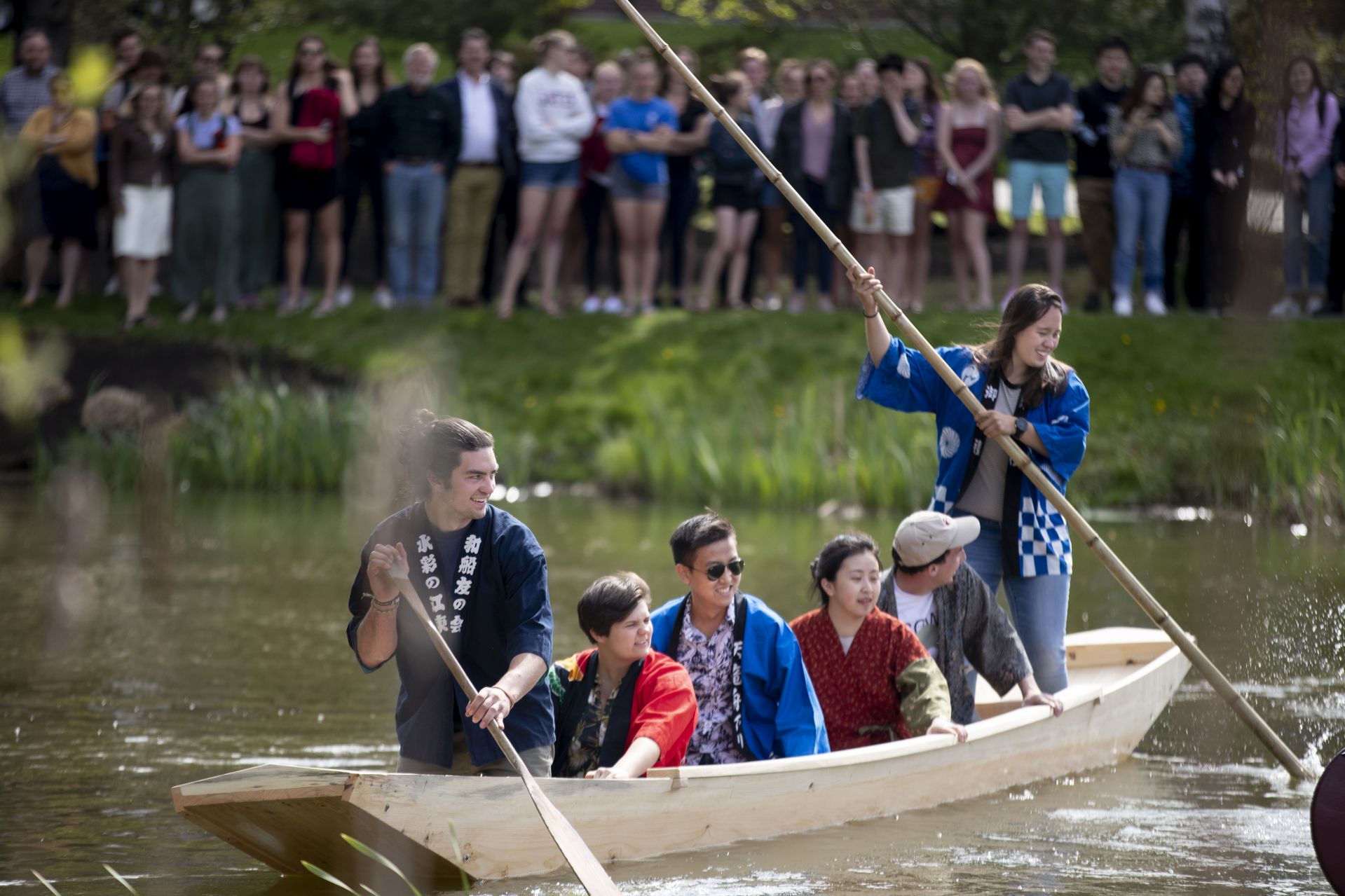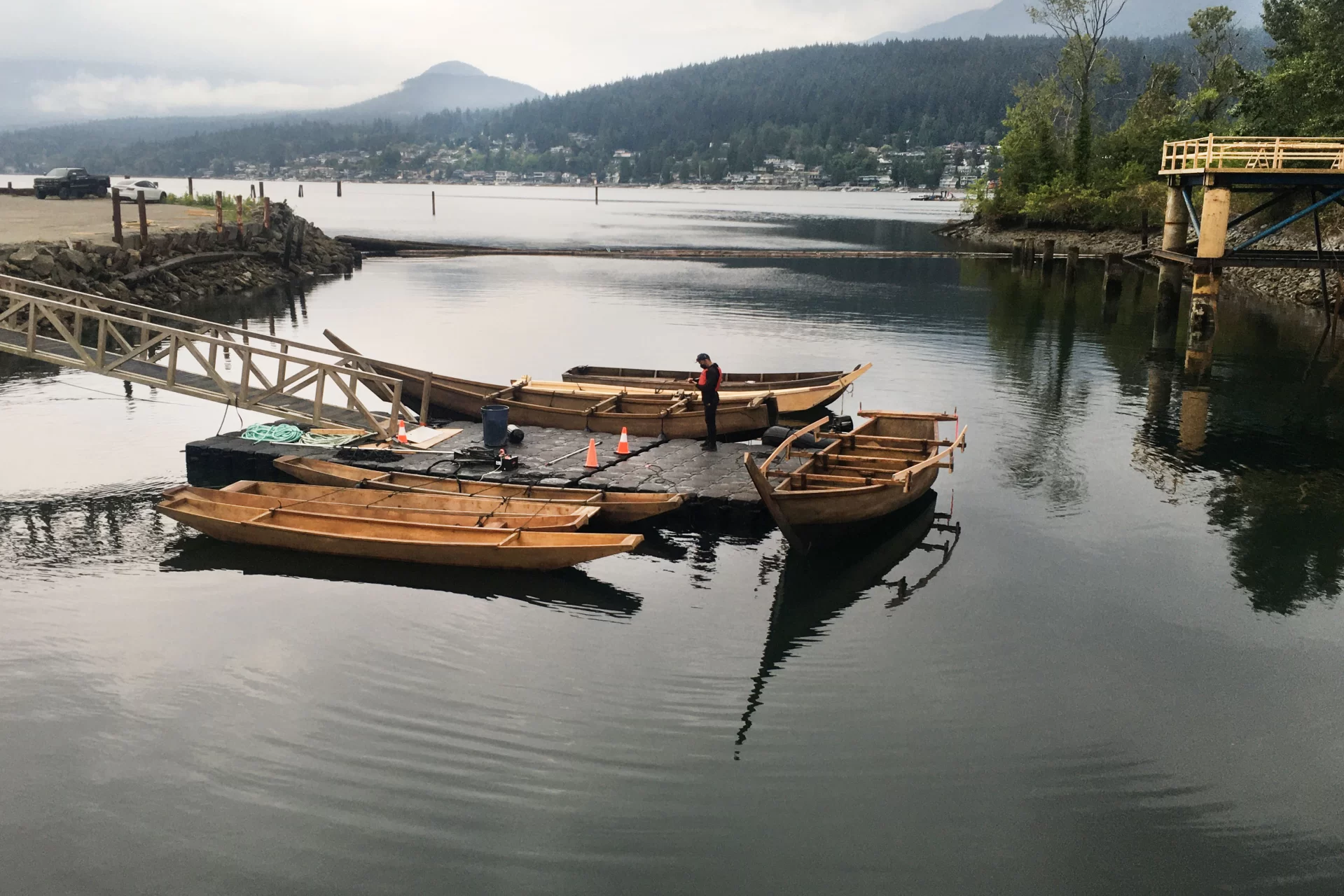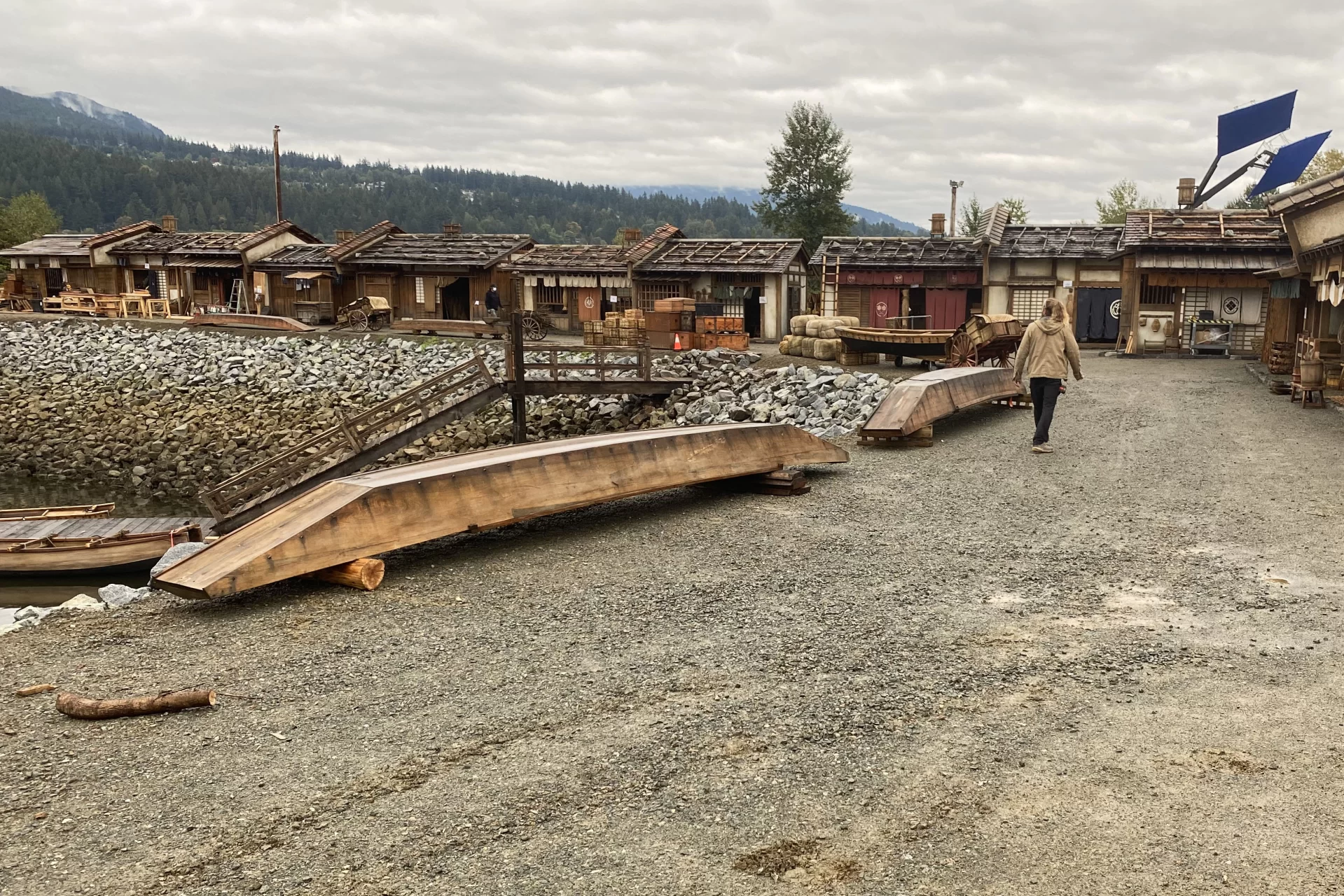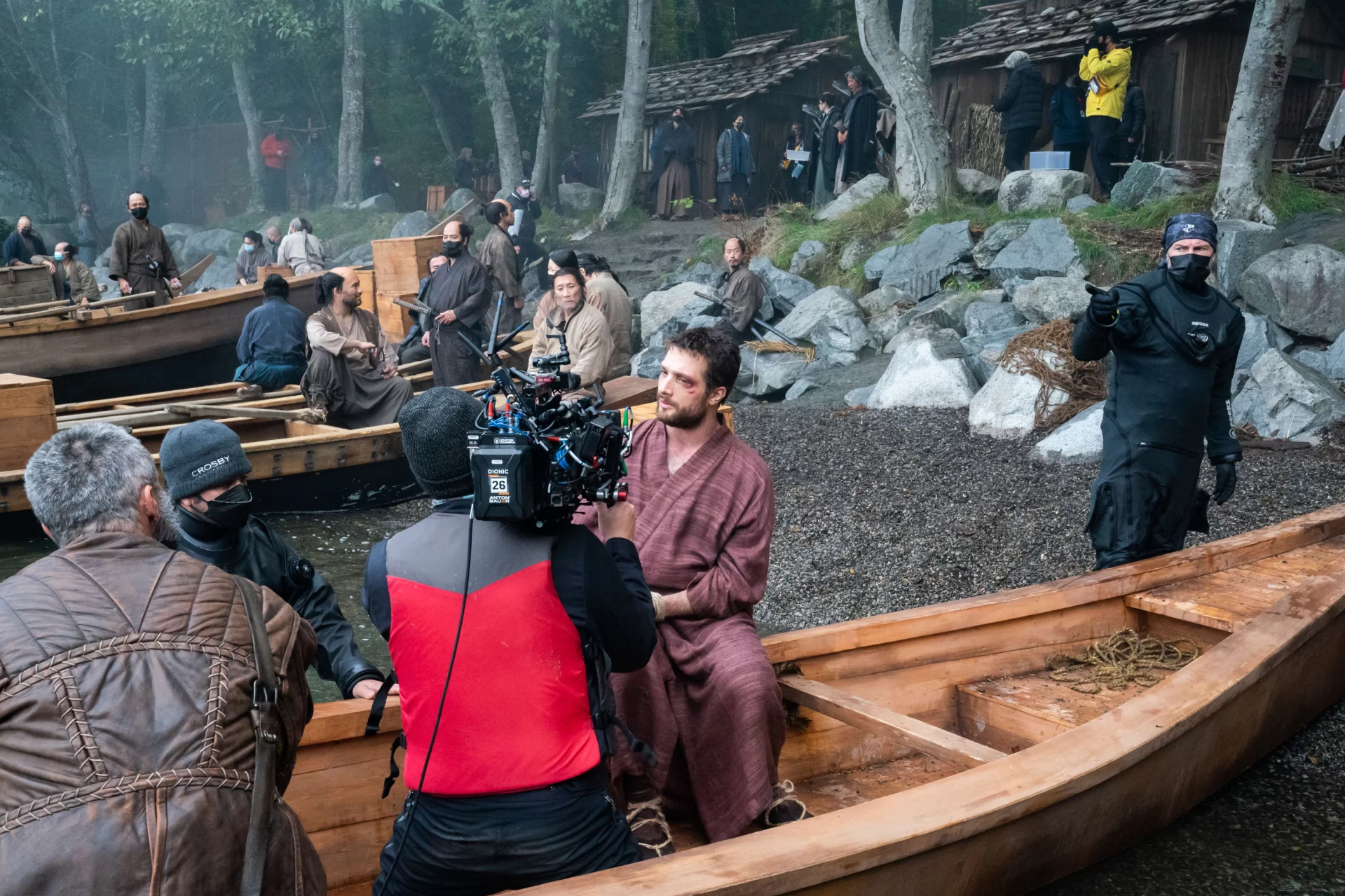
Two traditional Japanese river boats, handcrafted by Bates students and launched into Lake Andrews five years ago, are part of the re-creation of feudal Japan for the TV adaptation of Shōgun, which debuts today (Feb. 27) on FX.
Back in 2019, Douglas Brooks, an author and expert in Japanese boatbuilding, led the Short Term course “Apprentice Learning: Building the Japanese Boat.” During the course, one of the practitioner-taught courses arranged by the Center for Purposeful Work, Brooks’ students built two long, narrow, flat-bottomed boats and then, in a ceremony reflecting Shinto tradition, guided them on a maiden voyage on the Puddle.

From then until spring 2021, the two 21-foot boats remained in storage at Bates. In the meantime, FX, a subsidiary of Disney, was ramping up production of a 10-part TV series based on James Clavell’s 1975 novel, which is set at the dawn of the 17th century.
In the novel and in the TV series, traditional Japanese wooden boats are a central part of the seascape and riverscape, used for both transportation and military purposes. To ensure the authentic presentation of this important prop, the producers hired Brooks.
He provided Disney with traditional boat drawings that their scenic boat builders, overseen by prop master Dean Eilertson, used to create a fleet of small samurai warships. Disney also asked if there were any existing traditional Japanese boats available in North America. “I told them about the boats at Bates,” Brooks said.

Disney reached out to Bates and negotiated a purchase in spring 2021. Brooks traveled to Lewiston to oversee their shipment to the filming location in Vancouver, British Columbia; later, he was flown to the set to teach a few dozen extras how to use the Japanese sculling oar to propel other boats.
To recreate feudal Japan, the filmmakers chose the rural west side of Vancouver Island, thick with wilderness. There, they created a town with a castle; a palace; and a coastal fishing village.

The Bates boats are a traditional fishing boat, which was often used at the mouth of the Shinano River in Niigata Prefecture, “a huge farming region,” said Brooks, where the river skiffs — often called honryousen, or “typical fishing boat” — were used for transport, fishing, hauling rice, and dredging.
As far as Brooks could tell during his time advising on the filming in and around Vancouver, the Bates boats won’t appear on screen enough for viewers to create a drinking game (“Bates boats!”) of their appearance.

“I was told on set that the Bates boats would most likely be used to ‘dress’ the set, that is, provide a look of boats pulled up on a beach,” said Brooks. “I suspect if you see them anywhere, they will be at the fishing village.”
While many traditional Japanese boats are used throughout the series, most are of a different style used in battle scenes. “Primarily what you see in the film are small Samurai war ships.”
Since 1996, Brooks has apprenticed with Japanese boat builders and written several books on the practice. Back in 2019, just prior to the campus launch, he described the experience as “fantastic,” drawing the syllables out for emphasis.

“From the organization of this course, working with the Center for Purposeful Work, to the collegiality of faculty who contacted me with an interest in my course, to the students, who really were wonderful and worked very hard,” he said, “it’s been amazing.”
Additional reporting by senior writer Deirdre Stires.


